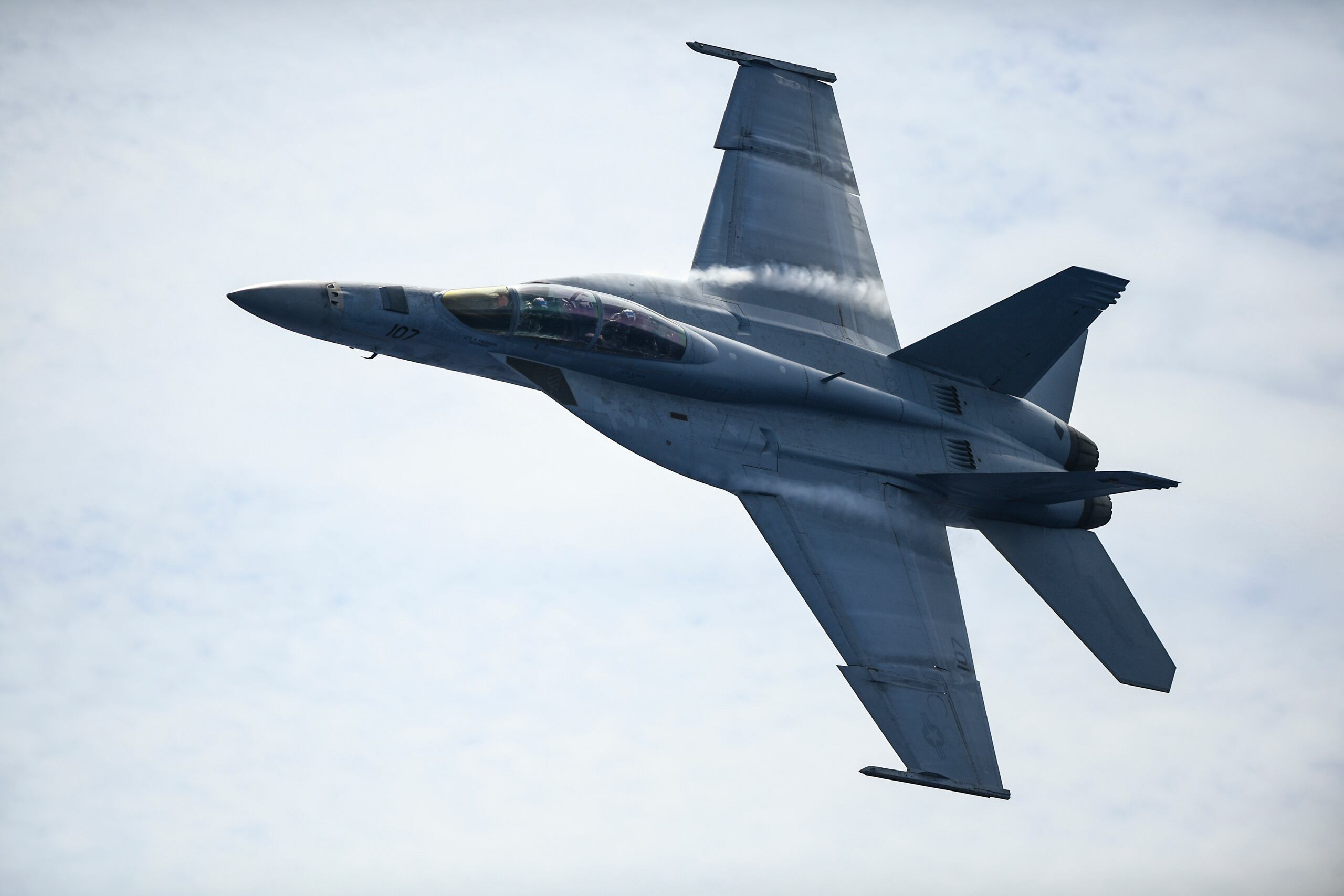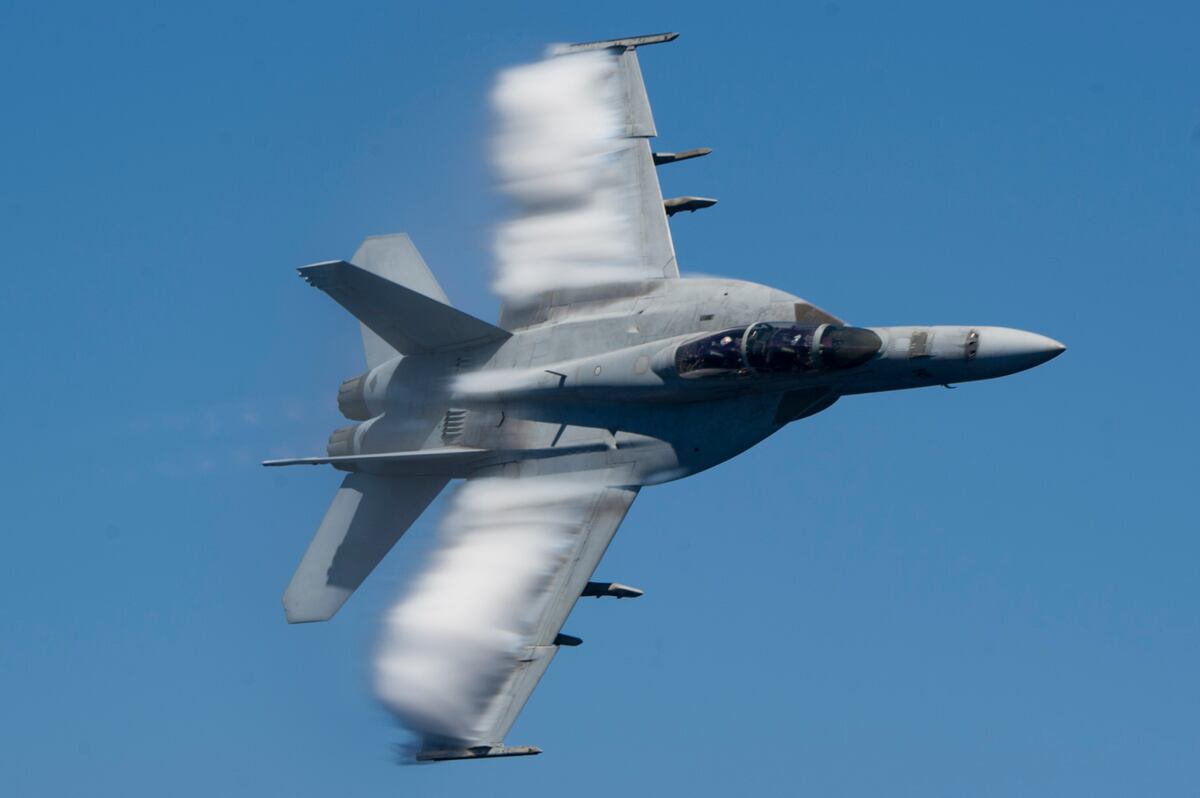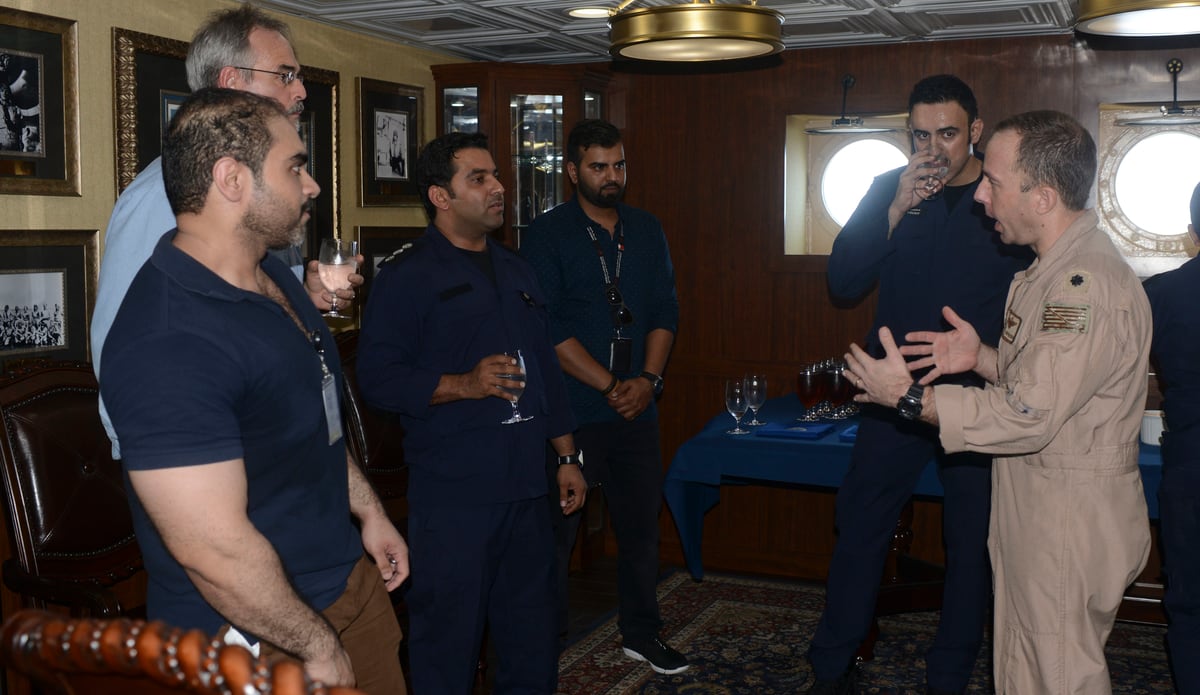The frantic crash landing of a Navy jet at a commercial airport in Bahrain last year was caused by dual failures of the engines’ exhaust nozzles, according to an official probe into the incident.
The mishap occurred on Aug. 12, 2017, as an F/A-18E Super Hornet from the “Blue Diamonds” of Strike Fighter Squadron 146 took off from the aircraft carrier Nimitz as part of a morning maintenance flight.
By the end of his trip, the unnamed lieutenant commander pilot had ejected over Bahrain International Airport and his jet was destroyed.
While the exhaust systems on both engines experienced glitches shortly before the crash, the command investigation into the mishap could not determine what caused the dual variable engine nozzles to conk out.
“There is insufficient evidence to draw a determination on why the failure occurred and does not point to any misconduct or negligence by the pilot or maintenance personnel. The complex emergency experienced en route to Bahrain International, and once on deck after landing, created a situation where no good options existed," wrote Cmdr. Andrew Shulman, the squadron’s commanding officer who endorsed the findings in November.
Shulman added that everyone involved in the flight took appropriate steps to save lives and minimize property damage.
RELATED

The military had recorded at least 35 dual variable engine nozzle incidents between 2013 and 2017, according to the report. Investigators recommended that Naval Air Forces “continue research to determine root causes and implement corrective actions for this issue.”
Considered critical for producing thrust in jet engines, the nozzles had not been lubricated in the days leading up to the flight. That’s part of a seven-day inspection process so the lead investigator wrote it “may have contributed” to the dual failure.
Before the crash, the Super Hornet had not been flown for more than 30 days due to a lack of parts to fix a fuel bladder cut, the report states. It was being flown solely to ensure its functionality, was not armed and was not part of an operation.
The jet launched from the Nimitz at about 11:30 a.m. local time and the pilot almost immediately reported engine caution alerts.
A few minutes later, the pilot reported that the nozzles for each engine were open to contrasting degrees, with the left nozzle almost entirely agape and the right nozzle just 20 percent open, according to the report.
The pilot told the carrier that he needed to return to land on the flight deck immediately “due to a critical aircraft malfunction,” according to the report.
He planned to dump his fuel to make weight before landing on the ship, but his fuel dump switch kept sliding back to the off position on its own.
Officers on the Nimitz began drawing up a plan with the pilot to attempt a landing during a recovery cycle later, when the jet was at the best weight and fuel state. But roughly 15 minutes into the flight, the pilot told his superiors that the jet felt like it was flying on a single engine due to the loss of left engine thrust
RELATED

.About half an hour later, the pilot contacted the control tower and said one engine’s nozzle was stuck open and the other seemed to be stuck closed. He questioned the jet’s ability to stay straight and level once landing gear was down.
He was directed to divert to Isa Air Base, about 100 nautical miles away but soon reported that his air speed was “decaying slowly,” according to the report.
“Don’t pass up a good field,” the pilot’s commanding officer told him. “I know you have Bahrain International on the way there.”
Realizing his fighter was unlikely to make it to Isa, the unnamed pilot opted to bring her down at the commercial airport.
“He stated that he thought this was ideal in case he lost thrust while on short final and had to eject,” the report states. “The aircraft would most likely end up in the water.”
When he touched down, the jet was going about 115 miles per hour. The pilot “initiated heavy braking and immediately felt the right tire blow out followed by the left tire blow out,” according to the report.
He ejected. The jet spun around 150 degrees, left the runway and skidded into the sand.
The engines were still running after the crippled jet came to a rest so the pilot borrowed a ladder from first responders and “climbed up and pulled back the throttles to the off position,” the report states.

Post-mishap photos apparently showed the left engine nozzle open and the right engine nozzle closed but Navy officials did not release those images alongside the official report.
The Super Hornet was a complete loss, according to the report.
Geoff is the managing editor of Military Times, but he still loves writing stories. He covered Iraq and Afghanistan extensively and was a reporter at the Chicago Tribune. He welcomes any and all kinds of tips at geoffz@militarytimes.com.




